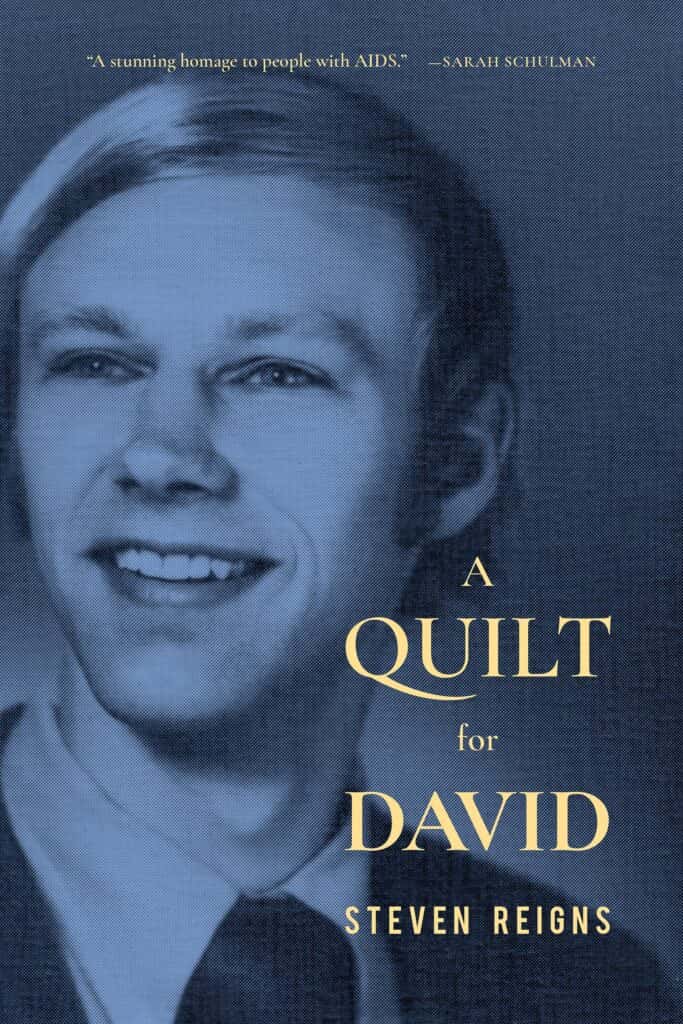
Steven Reigns, a Los Angeles-based writer who was the first official Poet Laureate of West Hollywood, blends literary genres to stunning effect in his spare and powerful new work, A Quilt for David, which can fairly, if incompletely, be described as True Crime Poetry.
While the book was published mid-pandemic by San Francisco’s esteemed City Lights press—home of Allen Ginsberg’s “Howl” and other landmark works of queer consciousness—Reigns will be making his first Bay Area appearance on behalf of the book with a reading and discussion at 4pm, Saturday July 30 at Fabulosa Books on Castro Street.
In fewer than 100 pages, Reigns revisits the largely forgotten case of Dr. David Acer, a gay Florida dentist who, in the late 1980s, was accused by eight patients of infecting them with HIV. While Acer was never proven to be the source of their infection, he was nonetheless was tried and declared guilty by an AIDS-phobic media, eventually dying a shunned and lonely man. Meanwhile, one of his accusers, Kimberly Bergalis was featured as a tragic figure on the cover of People magazine.
Reigns, who was a Florida middle school student during the period of Acer’s public humiliation, has long been haunted by it. Over the course of 10 years, he returned there to scour local newspaper and government archives and to interview sources close to the story.
His findings infuse every taut line of his gut-twisting work, revealing previously unexposed shame and secrets that may have driven Acer’s patients to seek a scapegoat in their dentist, demonizing him for being gay, rather than having empathy for him as a fellow innocent victim. In unraveling the case, Reigns slowly reveals many painful, poetic ironies in the lives of Acer, his patients, and the loved ones they left behind.
In anticipation of the event at Fabulosa, I asked Reigns a few questions about the research and writing that went into this unusual book:
Why did you choose to write what is essentially a book of of non-fiction in poetry rather than prose?

I am a poet. Writing poetry is how I make sense of things. And the more research I did about the David Acer case, the more poetry seemed like a natural form to tell this story in. The events happened so long ago and were so poorly documented that I was working with remnants. In a sense, each section of the poem is a patch in the quilt of the story.
Writing has always offered me solace and a place to make sense of things that are confusing or unsettling. I’ve done it with my personal past and did it in this book. Some of these poems started off as marginalia on the xeroxes I made of articles or in my research notebook. I had such an emotional response to the situation that it was easy to convey those feelings into poetry.
How did this particular story take grip on your imagination?
I saw several segments about the Acer case after school in the 8th grade on “A Current Affair” and “Inside Edition”. The reason I watched those tabloid shows is that, back then, they were the only places I saw gay men on TV.
But what brought it back to mind more than 25 years later?
For a decade I worked as an HIV Test Counselor. It was at my job I started thinking back about Kimberly Bergalis, this virgin who was infected by her dentist. Even when I first remembered the story, I assumed that the dentist had been careless or purposefully infected his patients. But I was highly knowledgeable about HIV and came to realize that there was no logical explanation for how transmission might have occurred. I started searching for answers and they weren’t clear.
What was clear was that homophobia and AIDS-phobia permeated almost every article that was published about the case back then. This was a terrible incident of gay scapegoating. So the book became about more than this particular case; its also about what was going on in America at that time, about how gay men and people with HIV were treated.
Have you thought about the kind of assumptions that people made back in the 80s might have been amplified in today’s age of social media and cancel culture?
This is a cautionary tale for sure. What happened to David could happen to any of us: Someone points a finger and our whole trajectory—or legacy—could change, regardless of the facts.
